Evolutionary Game Analysis of Shared Manufacturing Quality Synergy under Dynamic Reward and Punishment Mechanism
Abstract
:1. Introduction and Theoretical Assumptions
1.1. Introduction
1.2. Theoretical Assumptions
- (1)
- Unlike the expected utility theory, the evolutionary game based on the PT MA theory introduces a novel approach of calculating utility by including the decision maker’s reference effect, risk preference, and other subjective considerations into the utility calculation.
- (2)
- Non-linear handling of decision weights.
2. Game Model Construction
2.1. Basic Assumptions
2.2. Model Construction
3. Model Analysis under the Static Reward and Punishment Mechanism
3.1. Analysis of Supply Side Strategy Stability
3.2. Stability Analysis of Demand Side Strategy
3.3. Stability Analysis of Shared Platform Strategy
3.4. Stability Analysis of Strategy Portfolio
3.5. Analysis of Results
- (1)
- Valence-cost perception bias
- (2)
- Reference dependency
- (3)
- Risk appetite
4. Model Analysis under the Dynamic Reward and Punishment Mechanism
4.1. Static Rewards and Dynamic Penalties
4.2. Dynamic Rewards and Static Penalties
4.3. Dynamic Rewards and Punishments
5. Simulation Analysis
5.1. Influence of Reward and Punishment Mechanism
- (1)
- In terms of the combined effectiveness of different mechanisms, dynamic reward and dynamic punishment mechanism, static reward and dynamic punishment mechanism can effectively change the system’s unstable state, causing the system to gradually evolve and stabilize in a certain stable state. Under the dynamic reward and dynamic penalty mechanism, the slope of the trajectory and the position of the stable point, the system evolution converges faster, and the probability of supply side quality improvement is greater. As a result, the dynamic reward and punishment mechanism outperforms the static reward and punishment mechanism.
- (2)
- The system does not have an evolutionary stable state under the static reward and static punishment mechanism or the dynamic reward and dynamic punishment mechanism. In terms of the stability of strategy combination, the system’s stability under the static reward and static penalty mechanism is stronger, and the static reward and static penalty mechanism is better than the dynamic reward and static penalty mechanism; in terms of the stability of strategy evolution, although the dynamic reward and static penalty mechanism is better, the static reward and static penalty mechanism is better. The degree of instability of the system is more obvious under the reward and dynamic punishment mechanism, but the probability that the supply side chooses quality improvement and the shared platform chooses active supervision is also higher. The dynamic reward and static punishment mechanism is better than the static reward and static punishment mechanism.
- (3)
- The system does have an evolutionary stable state under the dynamic reward and dynamic punishment mechanism, and the static reward and dynamic punishment mechanism. However, by analyzing the position of the stable point, it can be seen that the probability of active supervision of the shared platform is high at this time, but the probability of quality improvement on the supply side is medium, the probability of cost sharing on the demand side is low, and the enthusiasm for the shared manufacturing to directly participate in the quality improvement of both parties is low, the driving force of quality coordination mainly comes from the external supervision and regulation of the shared platform. The endogenous driving force from the supply side and the demand side is weak, which is not conducive to the effective progress of quality improvement work and the long-term development of the shared manufacturing model.
5.2. Influence of Cost Allocation Ratio
5.3. Impact of Quality Improvement Gains
5.4. Influence of Reference Points
5.5. Influence of Loss Aversion Coefficient
6. The Impact of the Subsidy Mechanism on the Evolution of the System
6.1. The Impact of Subsidy Mechanism on System Evolution
6.2. Model Analysis
7. Conclusions
7.1. Key Summary
- (1)
- The synergistic improvement of shared manufacturing quality is the consequence of the combined action of numerous interrelated and interacting factors, rather than the linear effect of a single element. Objective elements impacting quality coordination include incentives and penalties, cost allocation ratio, quality spillover risk, and quality accident risk; subjective aspects include reference point, value perception, loss avoidance, etc. Subjective perceptions of participants can nevertheless influence each participant’s strategic choice in shared production if the objective conditions stay constant.
- (2)
- Although the combination of multiple incentive and punishment methods can significantly alter the effect of shared manufacturing quality synergy, there are certain effectiveness gaps. In terms of the combined effect of different reward and punishment mechanisms, static reward and dynamic punishment mechanism, dynamic reward and dynamic punishment mechanism, dynamic reward and dynamic punishment mechanism, dynamic reward and dynamic punishment mechanism can effectively change the stability of system evolution, while the intervention effect of dynamic reward and dynamic punishment mechanism is the best. Even with the optimal combination intervention mechanism, however, there are still problems such as low demand for cost allocation on the demand side. Although the system has reached a stable state, it is still far from ideal.
- (3)
- The subsidy mechanism can effectively compensate for the effectiveness gap of the reward and punishment mechanism, and it can also strengthen the internal driving force of shared manufacturing quality coordination. The implementation of a subsidy mechanism can considerably raise the eagerness of both the supply and demand sides of shared manufacturing to engage in quality coordination, shifting the driving force of shared manufacturing quality coordination from external control to subject consciousness. As a result, the development of the shared manufacturing quality synergistic system enters a stable state, tends to the evolution of the “Pareto optimum” technique, and eventually stabilizes in the ideal state.
7.2. Management Insights
- (1)
- Consider strong external regulation to be the framework constraint, and positive internal control to be the detail specification. While adjusting the incentives and punishments, as well as the risk of quality spillovers, to create a good environment for the synergistic improvement of quality in the shared manufacturing model, strengthen the training and publicity of the shared manufacturing participants, and improve the quality awareness of the subjects with a quality concept that considers the overall situation and long-term goals. External regulation and internal control work together to assist shared manufacturing quality improve synergistically.
- (2)
- Create a reliable reward and punishment mechanism and dynamically alter the intensity of rewards and penalties. Take the reward and punishment mechanism as an important mechanism foundation, and dynamically adjust the rewards and punishments based on each participant’s actual strategy choice, to avoid the drawbacks of the “one-size-fits-all” reward and punishment mechanism, which cannot fully mobilize the participants’ enthusiasm. The circumstance must be documented and sorted out as an important foundation for determining rewards and punishments in the following reward and punishment cycle.
- (3)
- To close the effectiveness gap, strengthen the subsidy mechanism as an essential addition to the incentive and punishment mechanisms. The subsidy mechanism is used as an important supplement to form a complete incentive chain of “subsidy before behavior, reward and punishment after behavior,” and promote the active participation of all subjects in shared manufacturing quality synergistic improvement on the basis of implementing the dynamic reward and punishment mechanism. The “pay attention and everyone is involved” quality coordination environment ensures the long-term growth of shared manufacturing quality synergistic improvement.
Author Contributions
Funding
Institutional Review Board Statement
Informed Consent Statement
Data Availability Statement
Conflicts of Interest
References
- Rozman, N.; Diaci, J.; Corn, M. Scalable framework for blockchain-based shared manufacturing. Robot. Comput.-Integr. Manuf. 2021, 71, 102139. [Google Scholar] [CrossRef]
- Liu, P.; Zou, Y. Two-Sided Matching Model of Shared Manufacturing Resources considering Psychological Behavior of Agents. Discret. Dyn. Nat. Soc. 2021, 2021, 7491913. [Google Scholar] [CrossRef]
- Yu, C.; Xu, X.; Yu, S.; Sang, Z.; Yang, C.; Jiang, X. Shared manufacturing in the sharing economy: Concept, definition and service operations. Comput. Ind. Eng. 2020, 146, 106602. [Google Scholar] [CrossRef]
- Oberg, C. Disruptive and Paradoxical Roles in the Sharing Economies. Int. J. Innov. Manag. 2021, 25, 2150045. [Google Scholar] [CrossRef]
- Lan, J.; Ma, Y.; Zhu, D.; Mangalagiu, D.; Thornton, T.F. Enabling Value Co-Creation in the Sharing Economy: The Case of Mobike. Sustainability 2017, 9, 1504. [Google Scholar] [CrossRef] [Green Version]
- Ma, Y.; Rong, K.; Luo, Y.; Wang, Y.; Mangalagiu, D.; Thornton, T.F. Value Co-creation for sustainable consumption and production in the sharing economy in China. J. Clean. Prod. 2019, 208, 1148–1158. [Google Scholar] [CrossRef]
- Yan, J.; Meng, Y.; Lu, L.; Li, L. Industrial Big Data in an Industry 4.0 Environment: Challenges, Schemes, and Applications for Predictive Maintenance. IEEE Access 2017, 5, 23484–23491. [Google Scholar] [CrossRef]
- Tambare, P.; Meshram, C.; Lee, C.-C.; Ramteke, R.J.; Imoize, A.L. Performance Measurement System and Quality Management in Data-Driven Industry 4.0: A Review. Sensors 2022, 22, 224. [Google Scholar] [CrossRef]
- Zhang, Z.; Wang, X.; Su, C.; Sun, L. Evolutionary Game Analysis of Shared Manufacturing Quality Innovation Synergetic Behavior Considering a Subject’s Heterogeneous Emotions. Processes 2022, 10, 1233. [Google Scholar] [CrossRef]
- Wen, X.; Siqin, T. How do product quality uncertainties affect the sharing economy platforms with risk considerations? A mean-variance analysis. Int. J. Prod. Econ. 2020, 224, 107544. [Google Scholar] [CrossRef]
- Besik, D.; Nagurney, A. Quality in competitive fresh produce supply chains with application to farmers’ markets. Socio-Econ. Plan. Sci. 2017, 60, 62–76. [Google Scholar] [CrossRef]
- Xie, G.; Yue, W.; Wang, S. Quality Improvement Policies in a Supply Chain with Stackelberg Games. J. Appl. Math. 2014, 2014, 848593. [Google Scholar] [CrossRef]
- Yang, S.; Zhuang, J.; Wang, A.; Zhang, Y. Evolutionary Game Analysis of Chinese Food Quality considering Effort Levels. Complexity 2019, 2019, 6242745. [Google Scholar] [CrossRef] [Green Version]
- Zhang, C.; Xing, P.; Wang, J. Quality effort decision in service supply chain with quality preference based on quantum game. Int. J. Mod. Phys. C 2015, 26, 1550073. [Google Scholar] [CrossRef]
- He, J.; Zhang, J.; Gu, X. Research on sharing manufacturing in Chinese manufacturing industry. Int. J. Adv. Manuf. Technol. 2019, 104, 463–476. [Google Scholar] [CrossRef]
- Wang, X.; Zhang, C.; Deng, J.; Su, C.; Gao, Z. Analysis of Factors Influencing Miners’ Unsafe Behaviors in Intelligent Mines using a Novel Hybrid MCDM Model. Int. J. Environ. Res. Public Health 2022, 19, 7368. [Google Scholar] [CrossRef] [PubMed]
- Kuhn, H.W.; von Neumann, J.; Morgenstern, O.; Rubinstein, A. Theory of Games and Economic Behavior; Princeton University Press: Princeton, NJ, USA, 2007. [Google Scholar]
- Shen, H.; Peng, Y.; Guo, C. Analysis of the Evolution Game of Construction and Demolition Waste Recycling Behavior Based on Prospect Theory under Environmental Regulation. Int. J. Environ. Res. Public Health 2018, 15, 1518. [Google Scholar] [CrossRef] [Green Version]
- Fisher, S.A.; Mandel, D.R. Prospect Theory: An Analysis of Decision under Risk. Econometrica 1979, 47, 263–291. [Google Scholar] [CrossRef] [Green Version]
- Ma, C.; Chen, Y.; Nie, S. Four-Way Evolutionary Game Analysis of Government Project Bidding Collusion in a State of Limited Rationality Based on Prospect Theory. Comput. Intell. Neurosci. 2022, 2022, 6092802. [Google Scholar] [CrossRef]
- Wang, D.; Jia, Q.; Zhang, R. Evolutionary Game and Simulation of Subject Risk Management Behavior in Construction Stage of Engineering Project Based on Strong Reciprocity and Prospect Theory. IEEE Access 2021, 9, 74789–74801. [Google Scholar] [CrossRef]
- Yu, X.; Dong, G.; Liu, C. The Tripartite Regulation Game of Carbon Financial Products Based on the Prospect Theory. Front. Environ. Sci. 2020, 8, 610732. [Google Scholar] [CrossRef]
- Thaler, R.H. Mental accounting matters. J. Behav. Decis. Mak. 1999, 12, 183–206. [Google Scholar] [CrossRef]
- Wu, B.; Cheng, J.; Qi, Y. Tripartite evolutionary game analysis for “Deceive acquaintances” behavior of e-commerce platforms in cooperative supervision. Phys. A Stat. Mech. Its Appl. 2019, 550, 123892. [Google Scholar] [CrossRef]
- Tversky, A.; Kahneman, D. Advances in Prospect Theory: Cumulative Representation of Uncertainty. J. Risk Uncertain. 1992, 5, 297–323. [Google Scholar] [CrossRef]
- Gurevich, G.; Kliger, D.; Levy, O. Decision-making under uncertainty—A field study of cumulative prospect theory. J. Bank. Financ. 2009, 33, 1221–1229. [Google Scholar] [CrossRef]
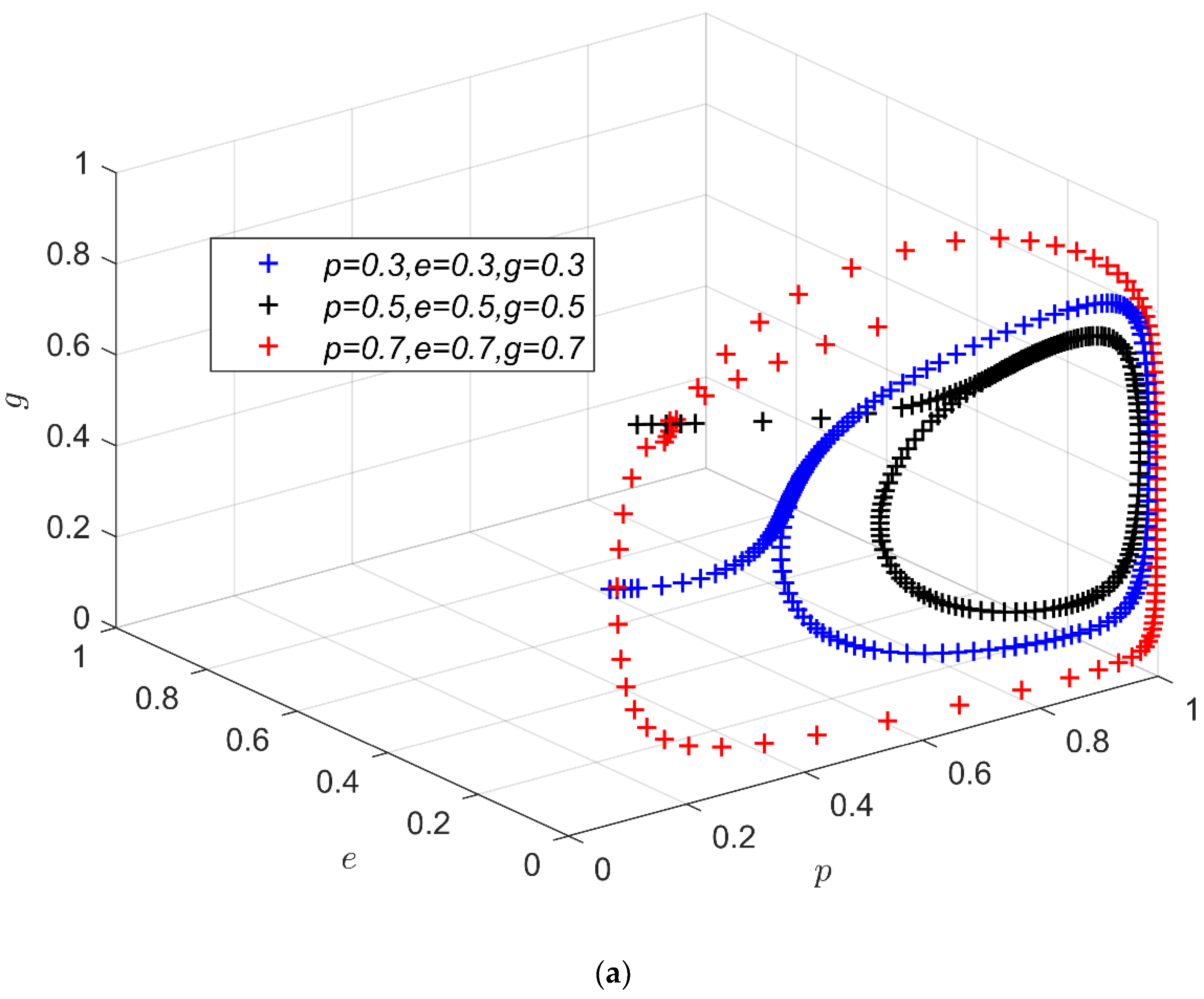
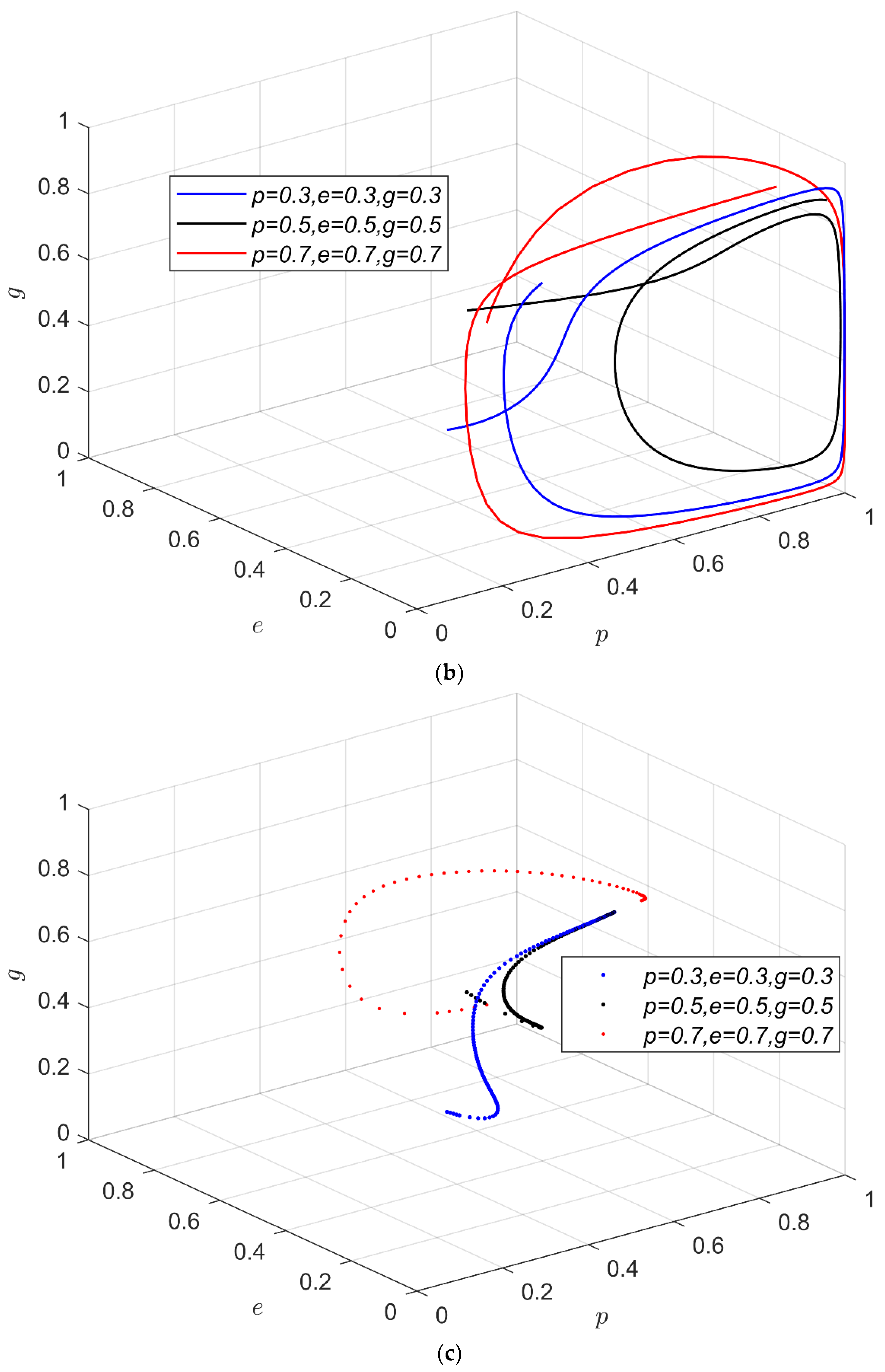
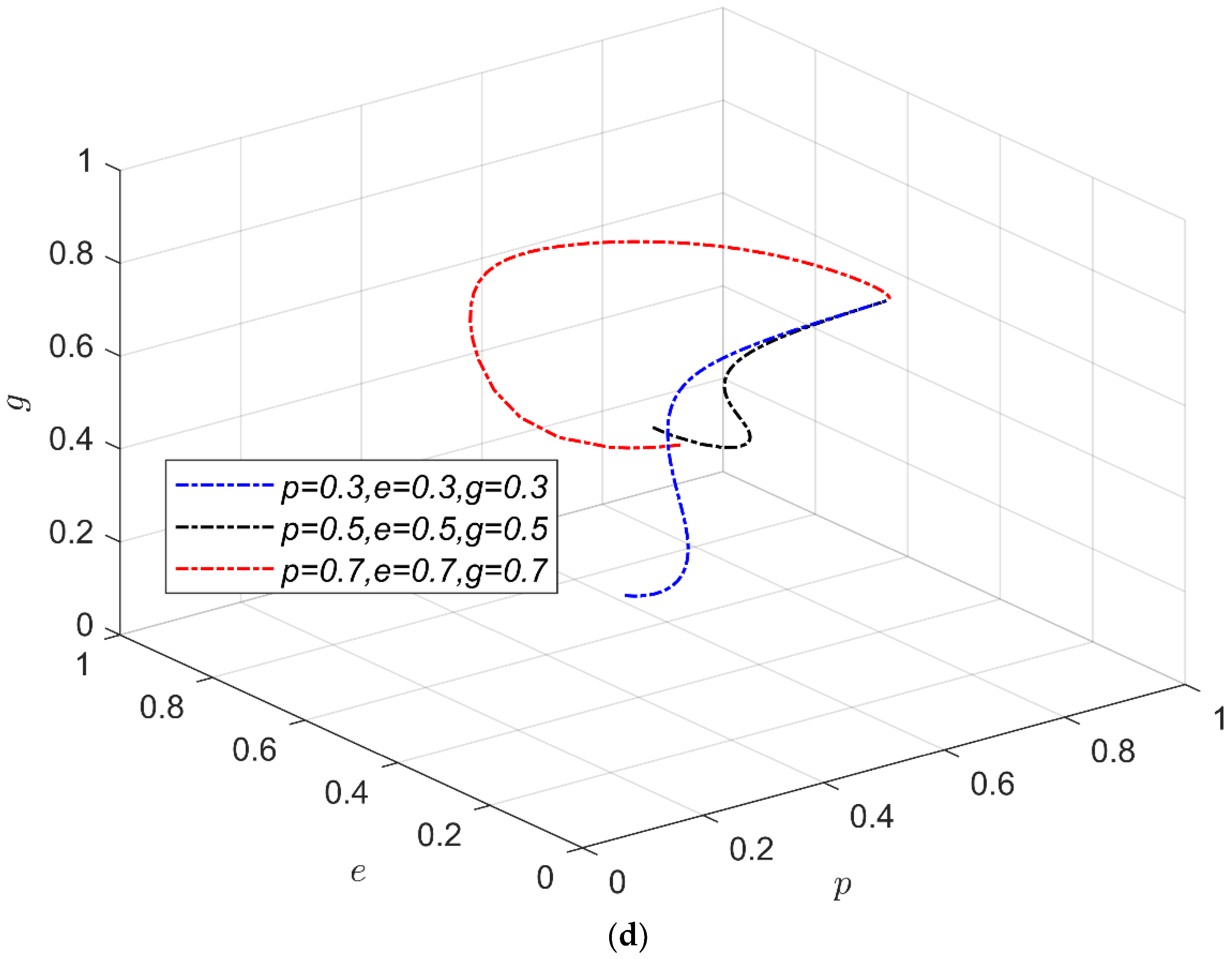
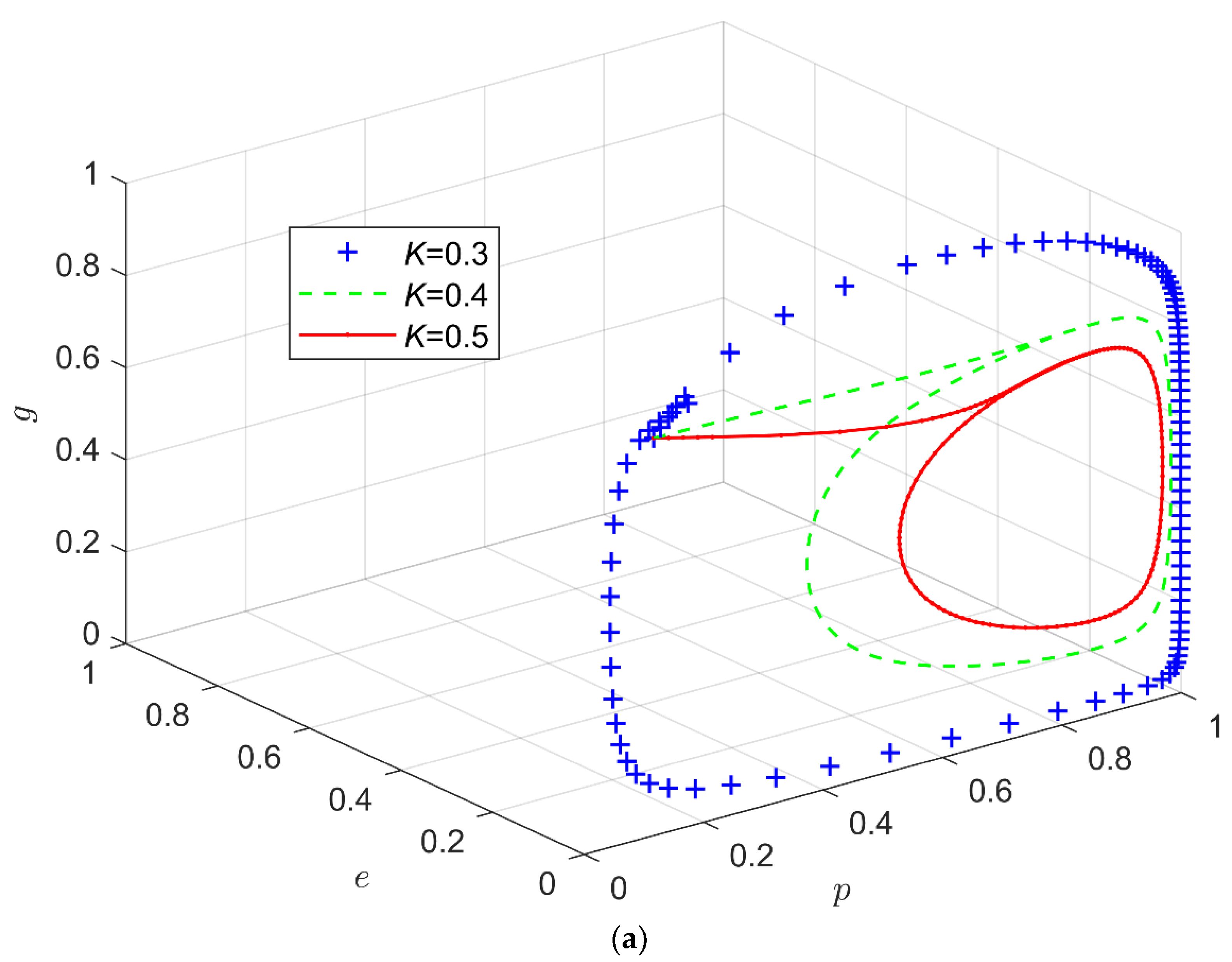
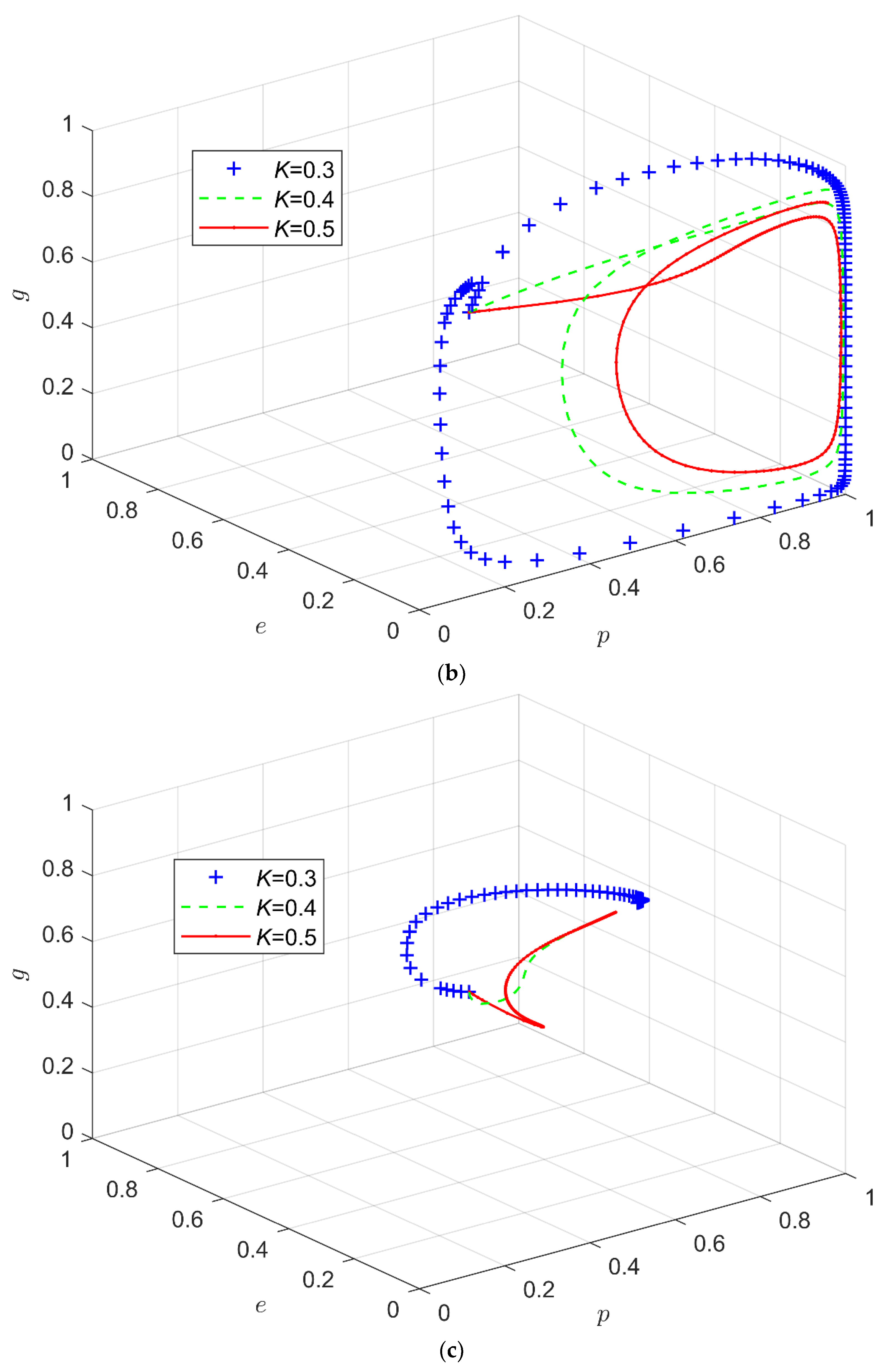
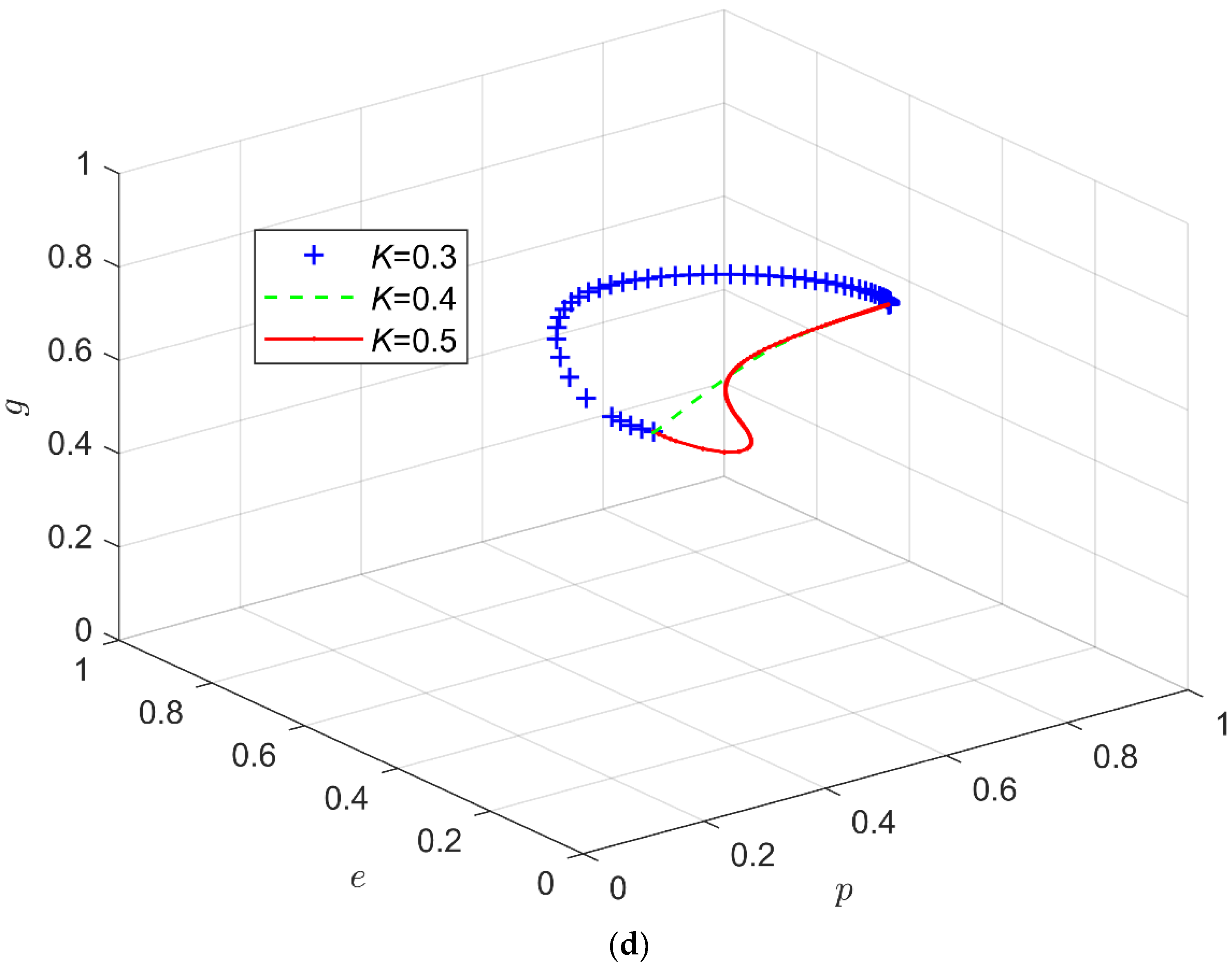
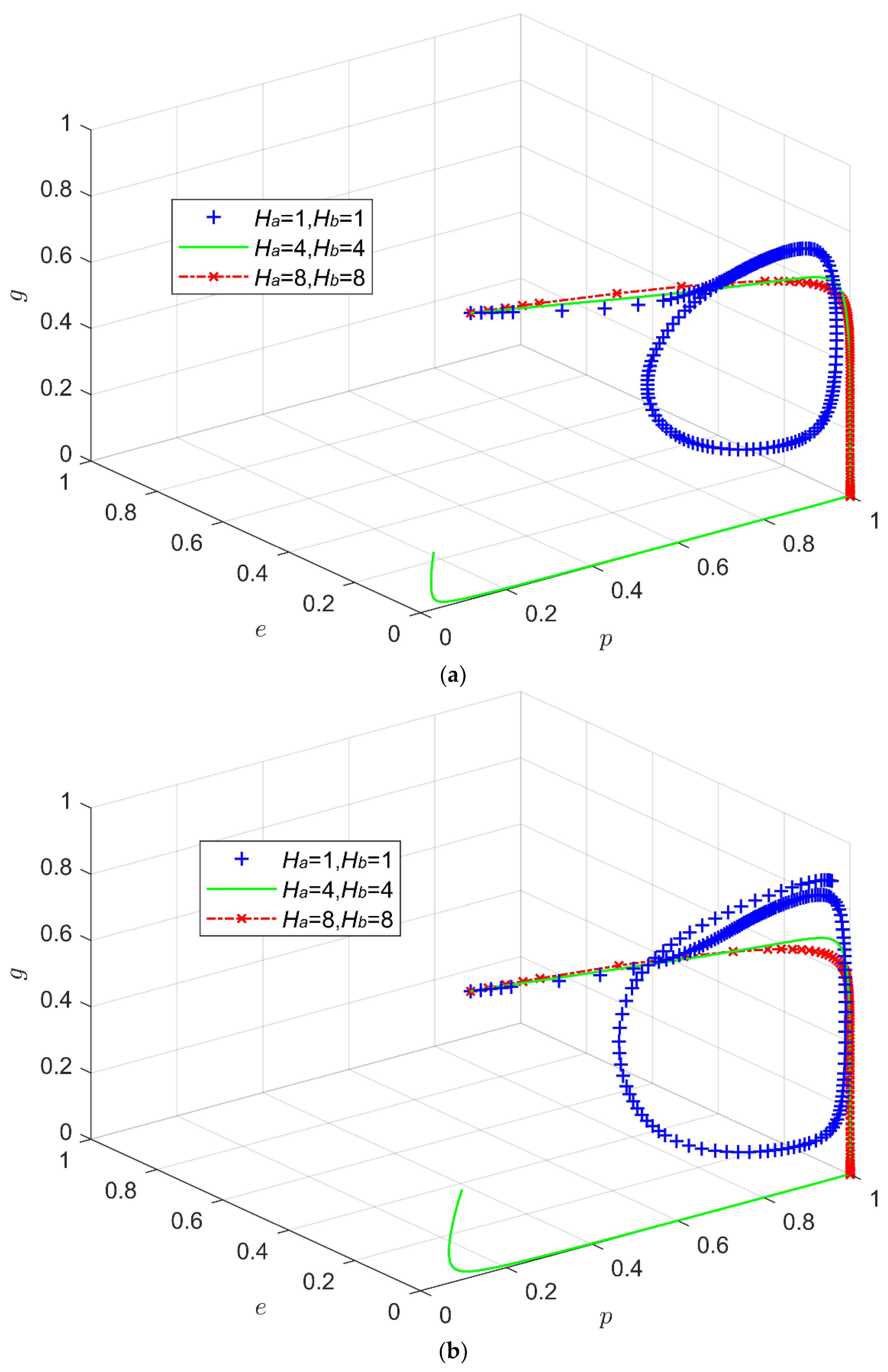
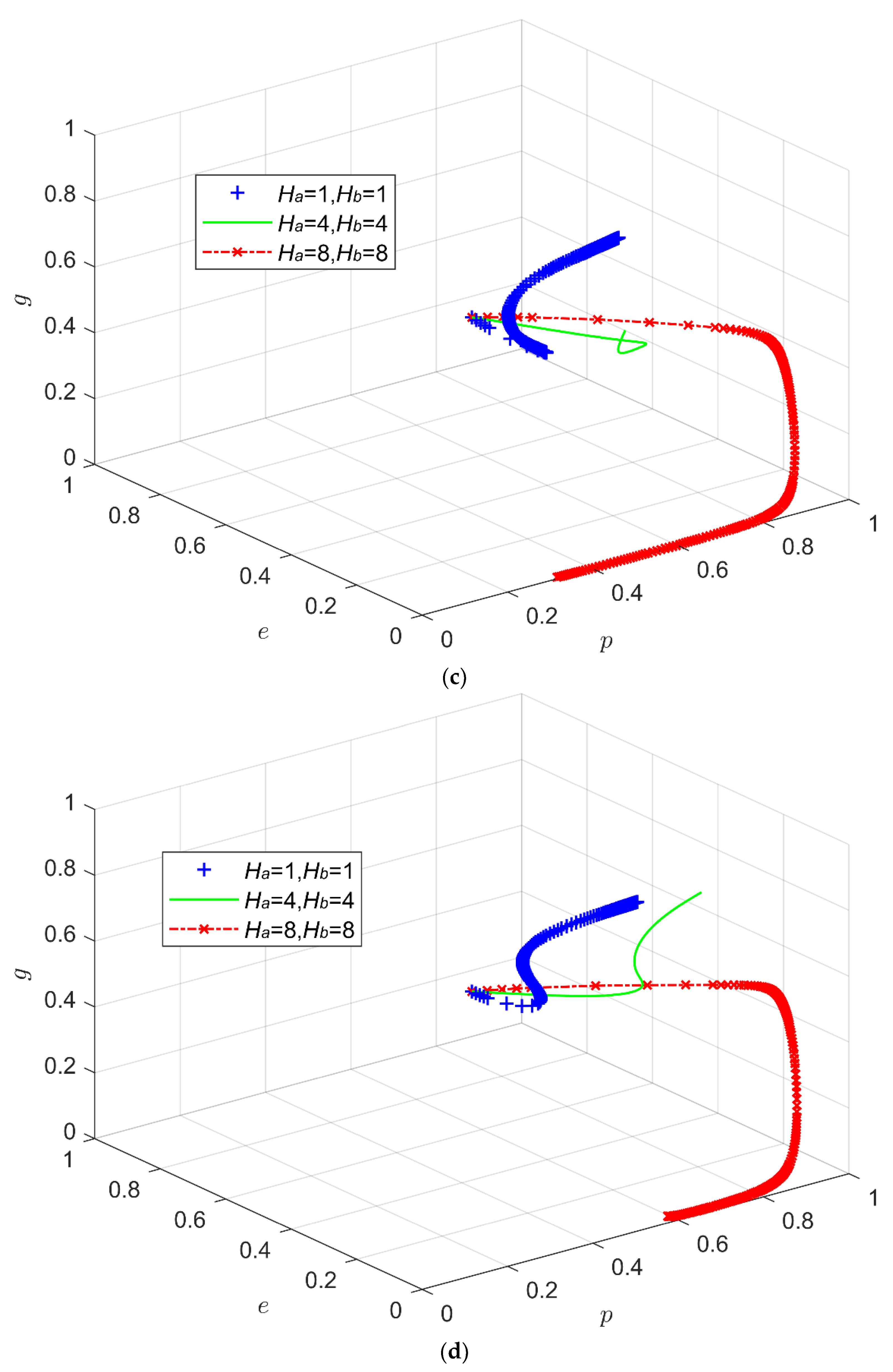

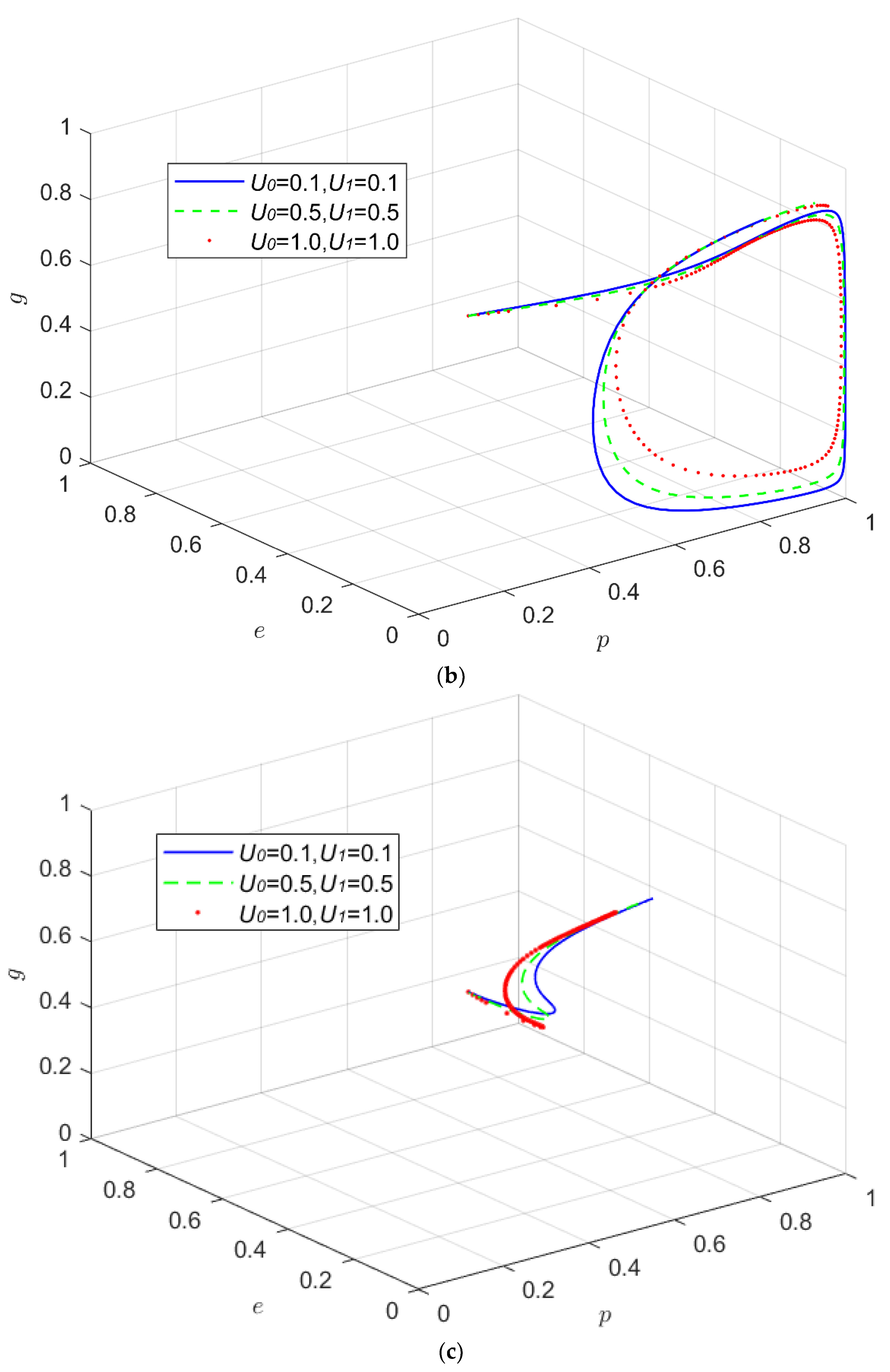
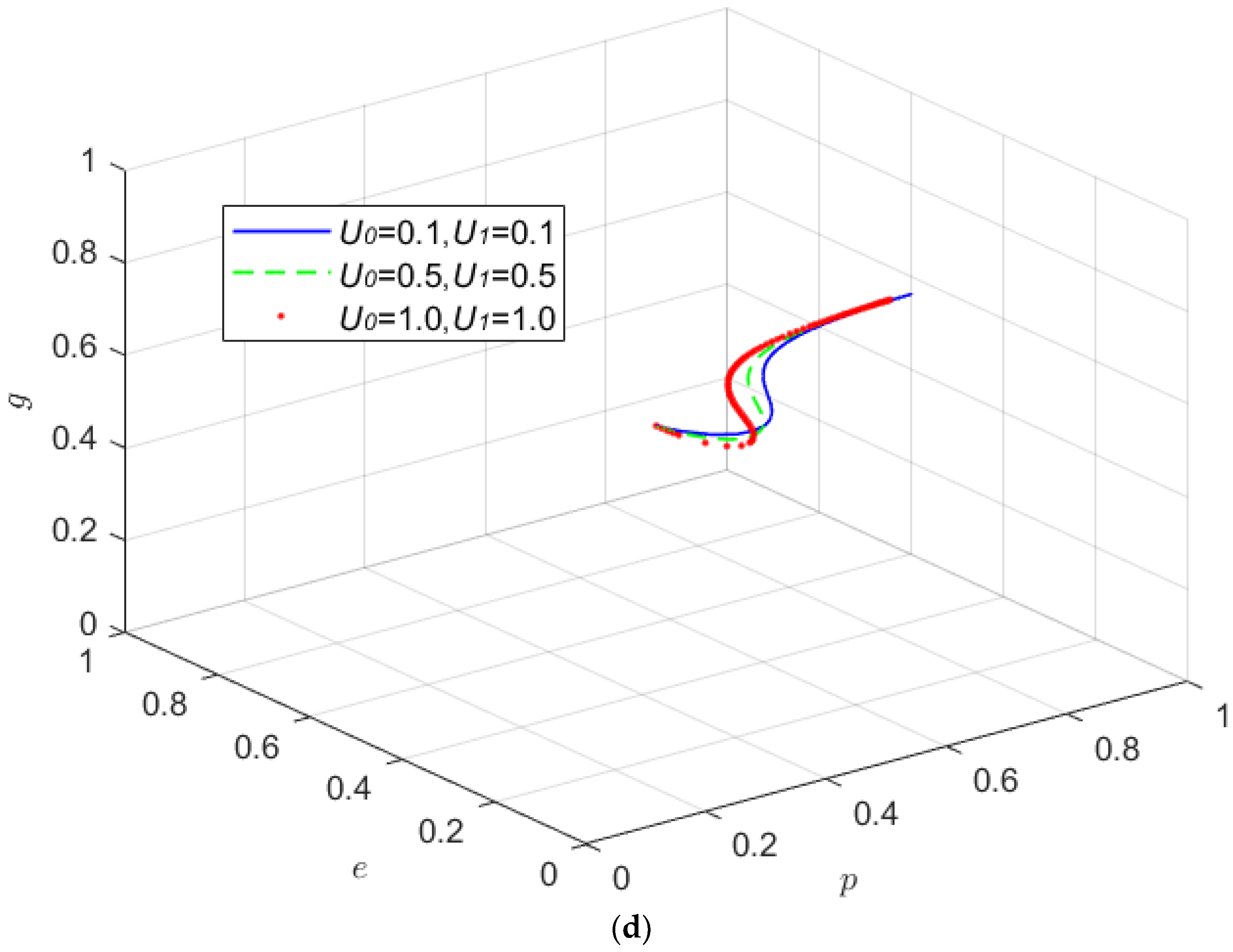
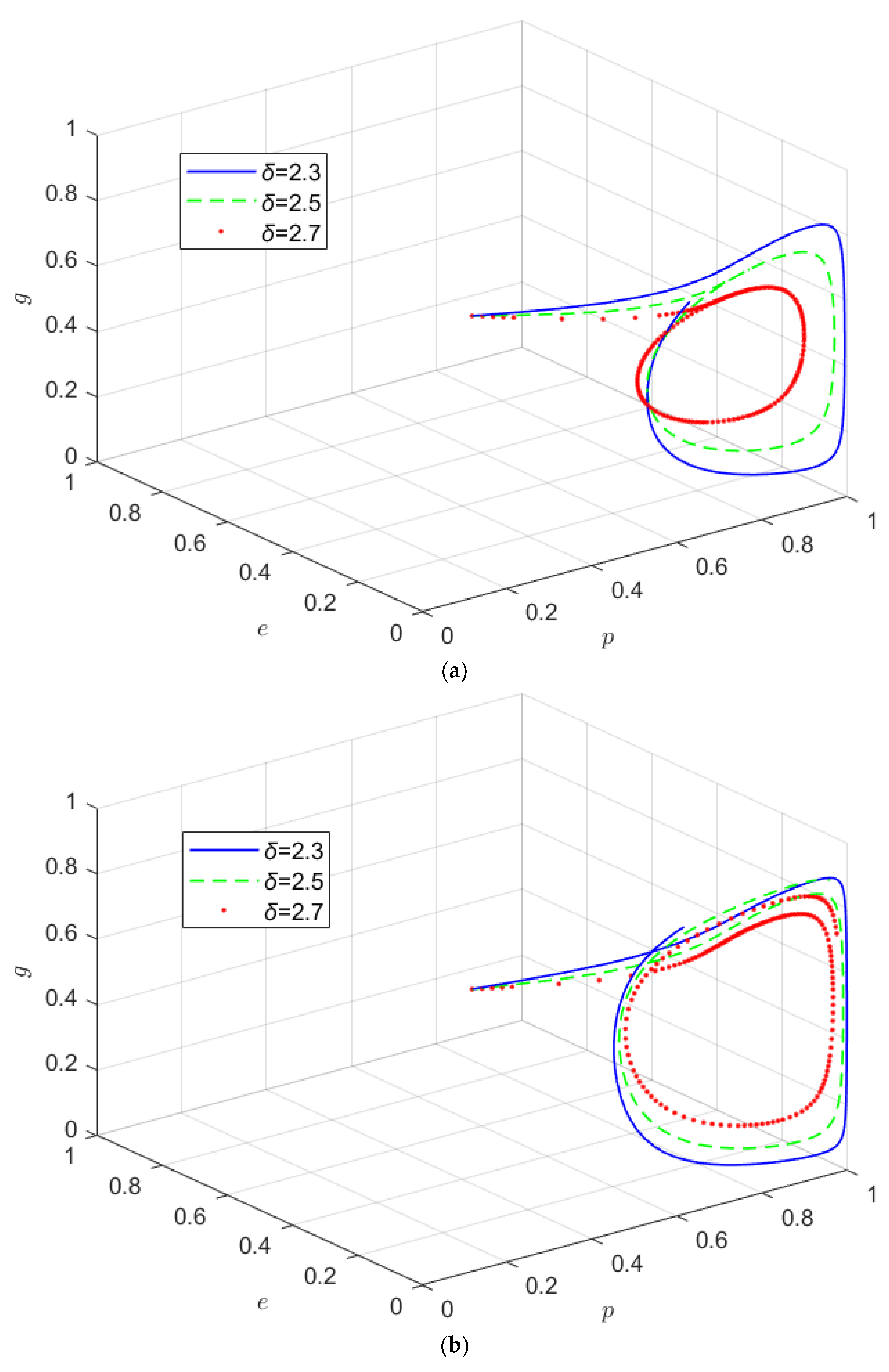
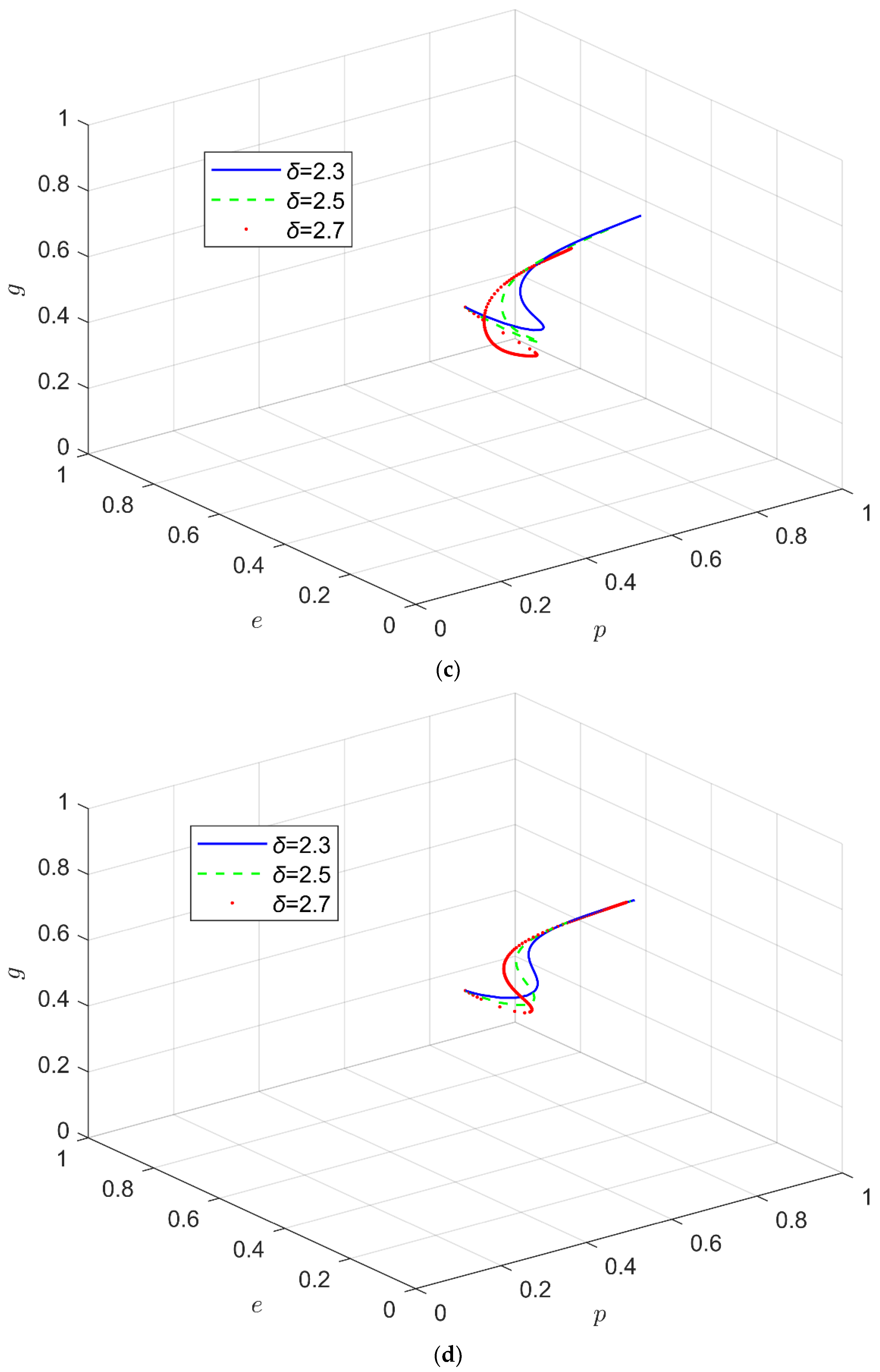
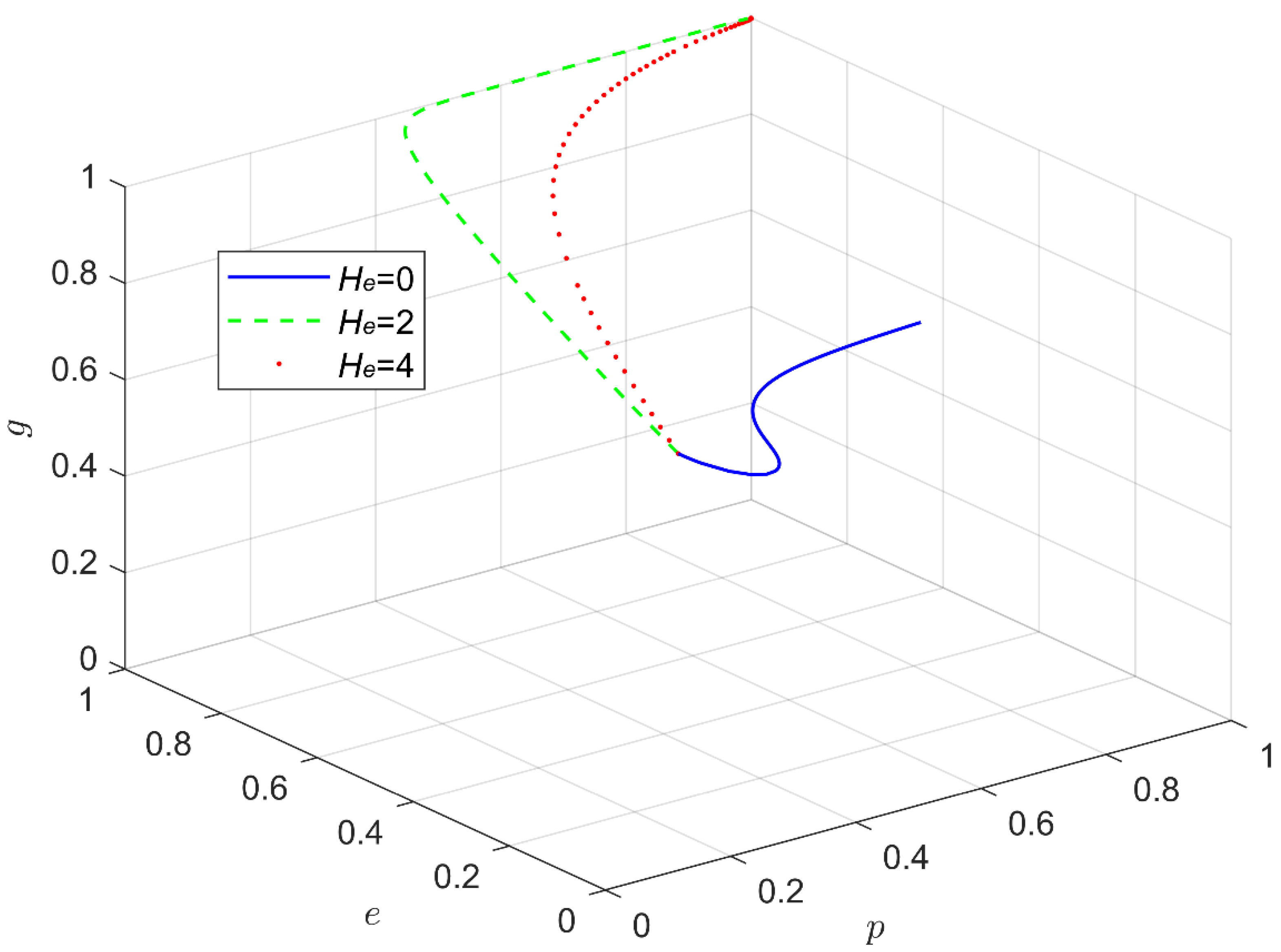
| Shared Platform | |||
|---|---|---|---|
| Active regulation g | Negative regulation 1 − g | ||
| Supply side quality improvement p | demand side cost sharing | ||
| demand side not cost sharing | |||
| Supply side not quality improvement 1 − p | demand side cost sharing | ||
| demand side not cost sharing | |||
| Parameter | Meaning |
|---|---|
| p | Probability of supply side quality improvement |
| e | Probability of demand side cost sharing |
| g | Probability of active regulation of shared platforms |
| Cph | Labor cost perception of supply side quality improvement |
| K | Demand side cost allocation ratio |
| Cgh | Labor cost perception of active supervision of shared platforms |
| Ha | Perceived loss reduction from supply side quality improvement |
| Hb | Increased perceived benefit from supply-side quality improvements |
| Hc | Benefit perception of active regulation of sharing platforms |
| Hd | Demand side unit gain/loss |
| Qa | Initial product quality level |
| Qb | Product quality level after supply side quality improvement |
| Qc | The quality level of the product after the quality improvement of the supply side |
| F | Perceived value of punishment by supply sides |
| R | Perceived value of rewards by supply sides |
| q | Probability of quality accidents |
| L | Quality accident risk |
| Quality risk transfer coefficient | |
| Quality risk spillover coefficient | |
| quality risk factor |
| Equilibrium Point | Sign | Stability | |
|---|---|---|---|
| (0, 0, 0) | (×, ×, ×) | saddle point | |
| (1, 0, 0) | (×, ×, ×) | saddle point | |
| (0, 1, 0) | (×, ×, ×) | saddle point | |
| (0, 0, 1) | (×, ×, ×) | saddle point | |
| (1, 1, 0) | (×, ×, ×) | saddle point | |
| (1, 0, 1) | (×, ×, ×) | saddle point | |
| (0, 1, 1) | (×, ×, ×) | saddle point | |
| (1, 1, 1) | (×, ×, ×) | saddle point |
| parameter | ||||||||||||||
| initial value | 0.5 | 0.5 | 0.6 | 8 | 2 | 0.5 | 1 | 1 | 6 | 2 | 5 | 2 | 1 | 8 |
| parameter | ||||||||||||||
| initial value | 2 | 0.2 | 0.6 | 0.5 | 5 | 0.03 | 1 | 1 | 0.88 | 0.88 | 0.98 | 0.98 | 2.5 | 2.5 |
Publisher’s Note: MDPI stays neutral with regard to jurisdictional claims in published maps and institutional affiliations. |
© 2022 by the authors. Licensee MDPI, Basel, Switzerland. This article is an open access article distributed under the terms and conditions of the Creative Commons Attribution (CC BY) license (https://creativecommons.org/licenses/by/4.0/).
Share and Cite
Zhang, Z.; Wang, X.; Su, C.; Sun, L. Evolutionary Game Analysis of Shared Manufacturing Quality Synergy under Dynamic Reward and Punishment Mechanism. Appl. Sci. 2022, 12, 6792. https://doi.org/10.3390/app12136792
Zhang Z, Wang X, Su C, Sun L. Evolutionary Game Analysis of Shared Manufacturing Quality Synergy under Dynamic Reward and Punishment Mechanism. Applied Sciences. 2022; 12(13):6792. https://doi.org/10.3390/app12136792
Chicago/Turabian StyleZhang, Ziming, Xinping Wang, Chang Su, and Linhui Sun. 2022. "Evolutionary Game Analysis of Shared Manufacturing Quality Synergy under Dynamic Reward and Punishment Mechanism" Applied Sciences 12, no. 13: 6792. https://doi.org/10.3390/app12136792
APA StyleZhang, Z., Wang, X., Su, C., & Sun, L. (2022). Evolutionary Game Analysis of Shared Manufacturing Quality Synergy under Dynamic Reward and Punishment Mechanism. Applied Sciences, 12(13), 6792. https://doi.org/10.3390/app12136792





